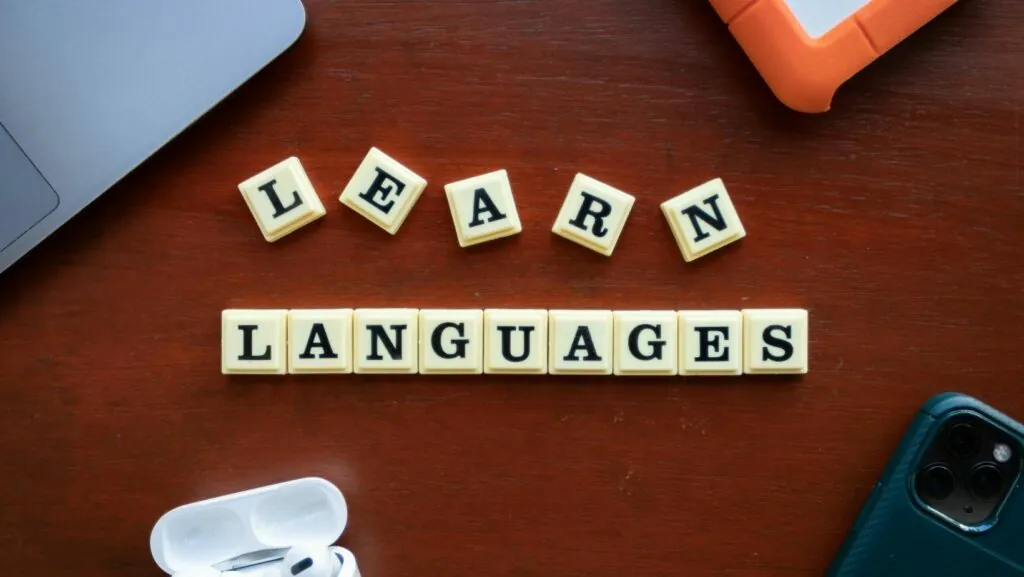Table of Contents
ToggleLearning Ukrainian can feel like a big challenge, but with the right plan, progress can happen quickly. The fastest way to learn Ukrainian is to focus early on the alphabet, use real-life practice, and build skills that can be used right away. Many learners find that online Ukranian courses with native speakers offer practical help and feedback that boost speaking and listening skills.
Taking part in real conversations, even at a beginner level, helps people remember vocabulary and grammar much better than just studying alone. Connecting with online lessons from Ukrainian teachers is a strong way to immerse in the language and build confidence from day one.
A focused approach not only saves time but also keeps motivation high. Using tips that have worked for others will help new learners see results fast and enjoy their journey with Ukrainian.
Key Takeaways
- Learn the Ukrainian alphabet right away.
- Use immersive methods to build useful skills.
- Practice with native speakers online for the best results.
Master the Ukrainian Alphabet Early
Learning the Ukrainian alphabet gives students a clear entry point to read, write, and listen to the language. Making early progress with the letters makes learning words and sounds much easier.
Understanding Cyrillic Script Basics
The Ukrainian alphabet uses a Cyrillic script with 33 letters. Many of these letters look and sound similar to those in the English alphabet, but some will be completely new. For example, А а is like “a” in “father,” and О о is like “o” in “more.” Other letters, such as Щ щ or Ї ї, have special uses and sounds.
It helps learners to group the letters into three types:
- Letters that look and sound similar to English (А, Е, К, М, О, Т).
- Letters that look familiar but sound different (В, Н, Р, С, У, Х).
- Letters that are unique to Ukrainian (ґ, є, і, ї, щ, ю, я).
Understanding these groups makes recognizing patterns in Ukrainian words easier. This makes the alphabet less confusing and helps students gain confidence faster.
Ideal Practices for Learning Letter Pronunciation
Pronouncing Ukrainian letters correctly is important to be understood and to understand others. Each letter has its own sound, and many match closely to how they are written. For example, Д д always sounds like “d” in “dog,” and М м like “m” in “mom.” However, some pairs can be tricky, such as Г г (a softer “h” sound) vs. Ґ ґ (harder “g” sound).

To master pronunciation:
- Listen to native speakers say each letter.
- Repeat sounds often, paying attention to differences.
- Record yourself and compare with examples.
- Practice difficult pairs every day.
A simple table can help track your progress:
| Letter | Example Word | Pronunciation |
| Л л | ліс (forest) | L as in “love” |
| Ш ш | шапка (hat) | SH as in “shop” |
| И и | син (son) | I as in “bit” |
Early focus on pronunciation helps avoid common mistakes.
Tips for Writing and Reading Ukrainian
Writing the letters by hand helps build muscle memory for the script. Start by tracing and then copying each letter 10 times. Say the sound aloud each time you write. This links the visual and spoken form in your mind.
Label everyday items in your home with Ukrainian words and their spellings. Reading familiar words in context increases memory. Flashcards with both the printed and handwritten forms can help with reading speed and recognition.
As students learn more words, they should try reading simple Ukrainian texts, like labels, signs, basic articles, or children’s stories. The more often they see and write the script, the more comfortable they become with the Ukrainian alphabet and language.
Build Practical Skills Fast With Immersive Strategies
Practical language skills come from daily, hands-on practice. Using a mix of real conversations, active listening, and targeted grammar study helps learners make fast progress with Ukrainian.
Practice With Native Speakers and Language Partners
Real progress comes from speaking and interacting with others. Joining a Ukrainian learners group, online chat, or language exchange lets learners practice speaking and listening in real conversations.
Finding a language partner makes it possible to have regular conversations and get feedback on pronunciation and grammar. Even short chats a few times a week can speed up language growth.
Online Ukrainian lessons with experienced teachers can provide personalized feedback and structured guidance. Learners can roleplay daily situations, ask questions, and correct mistakes in real time. Meeting regularly with partners or teachers builds confidence in speaking and listening.
Start With Essential Words and Everyday Phrases
Beginning Ukrainian learners should focus on basic words and phrases that come up in daily life. Greetings, common questions, food, family terms, and directions help students get used to speaking and understanding quickly.
Flashcards and spaced repetition apps can help with memorization. Lists of themed vocabulary, like colors or simple verbs, also make studying easier.
Short conversations using these words, such as saying hello or asking for directions, can be practiced out loud. This builds confidence and makes the words stick. Writing out short dialogues and repeating them helps put new terms into context.
Prioritize Key Grammar Fundamentals
Ukrainian grammar may seem different at first, but targeted study makes it manageable. Starting with basic sentence structure—subject, verb, and object—helps build a strong base.
One main feature is the use of cases. Learning when and how cases change word endings is helpful for building new sentences. Focus first on the nominative (for subjects) and accusative (for objects) cases.
Regular practice of simple sentences using these forms builds accuracy. Verb conjugation is another key skill; learners can make small charts of common verbs in present and past tense. Short daily drills using these charts can speed up understanding.
Use Podcasts, Music, and Movies to Reinforce Learning
Listening practice is important for picking up on pronunciation, rhythm, and natural word order. Ukrainian music and popular songs are a fun way to get used to common sounds and everyday slang.
Podcasts like Ukrainian Lessons Podcast or 5 Minute Ukrainian give short, focused lessons on real topics, often with slow and clear speech. Watching Ukrainian movies or TV with subtitles helps connect spoken words to written forms.
Make a routine to listen to Ukrainian audio daily, even if just a few minutes at a time. Try repeating lines, singing along to songs, or noting down new words. Exposure to Ukrainian literature or short stories also helps with reading and listening skills.
Conclusion
Learning Ukrainian quickly is possible with the right methods and steady practice. Sticking to short daily sessions can help learners stay motivated.
Using simple resources, practicing the alphabet, and applying new words every day makes progress clear. Speaking and writing a little each day helps build skill over time.
Making the language part of daily life and connecting with other learners or speakers can make the process more enjoyable. These steps make learning Ukrainian straightforward and rewarding.







